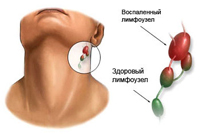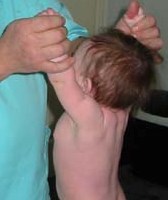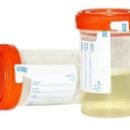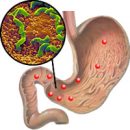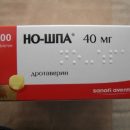In the treatment of peritonitis, the leading role belongs to infusion therapy and surgical treatment. The favorable exodus of the disease directly depends on how timely the elimination of infection surgically will be performed. Intravenous infusion therapy is aimed at maintaining the functions of vital organs.
Content
General principles of treatment of peritonitis
General principles for the treatment of peritonitis:
- Perhaps the earlier elimination of the focus of infection during surgical intervention
- Evacuation of exudate, washing the abdominal cavity with antibacterial drugs and adequate drainage by her tubular drainage
- Elimination of paralytic intestinal obstruction by aspiration of content through a nasogastric probe, decompression of the gastrointestinal tract, drug use
- Correction of voluble, electrolyte, protein deficit and acid-base state with adequate infusion therapy
- Restoration and maintenance at the optimal level of kidney, liver, heart and lungs; Adequitable antibiotic therapy
With a secondary peritonitis of indications for the operational elimination of the focus of infection are absolute. The operation must be made in possibly early. The rejection of the operation is permissible only in the agonial state of the patient, from which it fails to withdraw with the help of intensive resuscitation measures. Operational treatment is not shown in the primary peritonitis in cases of rapid improvement of the state and during pelvioperitonite, due to gynecological diseases, T.To. Conservative treatment usually leads to recovery. Conservative treatment is also shown in the infiltrates of the abdominal cavity in the absence of their abscess. Under the local peritonitis special preoperative preparation is required. With diffuse peritonitis, preoperative preparation is carried out in the intensive care unit or the ward of intensive therapy for 2-3 hours.
The leading role in it belongs to infusion therapy. 1500-2500 ml of liquid (5 or 10% glucose, isotonic sodium chloride solution, plasma, hemodez, refooliglucin, sodium bicarbonate, glutamic acid, vitamins B, and c). An important importance to the importance of a struggle against pain syndrome, which is started immediately after the final decision of the need for operational treatment. The operations of a wide range of action are used to operation, as well as cardiac glycosides, respiratory anagetti, with a rescue decrease in hemodynamic indicators - prednisone or hydrocortisone.
Surgical methods
 All operations about peritonitis are carried out under general anesthesia. Under the local negrantic and deliberate (abdominal abscess) peritonitis surgical access corresponds to the localization of its intended source. Padiaphragmal abscess times more often openly and unleashedly with the right-sided localization of the incision in the right hypochondrium or in the right lumbar region. When it is located on the left in most cases you have to use the alert access.
All operations about peritonitis are carried out under general anesthesia. Under the local negrantic and deliberate (abdominal abscess) peritonitis surgical access corresponds to the localization of its intended source. Padiaphragmal abscess times more often openly and unleashedly with the right-sided localization of the incision in the right hypochondrium or in the right lumbar region. When it is located on the left in most cases you have to use the alert access.
The intercircuit abscess is opened, trying not to get into the babes-free abdominal cavity, cut in the appropriate section of the abdominal wall directly above the affection. After opening the abscess, it is drained with the subsequent postoperative rented cavity sanitation.
Abscess Douglas Space Open», As a rule, through the incision of the front wall of the rectum with transanal access. With diffuse peritonitis need median laparotomy. During the operation, source reflects., Remove exudate or infected contents of the abdominal cavity, eliminate or degrade the source. By removing the affected organ or part of its part, the embedding of the wall of the hollow organ wall, remove it to the front abdominal wall or drainage of the corresponding permanent cavity department. Decompression of the gastrointestinal tract is carried out by nasogastric or unoinntestine intubation, the administration of the probe in the gastrostomy, ie, the rectum, etc. After washing the abdominal cavity with a solution of furaciline, chlorhexidine produces its drainage. With the degraded P. 1-2 drainage are introduced, and with a common or general peritonite 4-5 drainage for flowing washing of all bonding cavity departments and irrigation by its solutions of antibacterial drugs.
In the postoperative period, infusion therapy is carried out (up to 3000-4000 ml intravenous fluid), antibacterial therapy (antibiotics, antiseptic preparations, sulfonamides); Stimulation of the motor-evacuator function of the gastrointestinal tract (aspiration of the contents of intestinal lumen, prolonged peridural anesthesia, electrical and drug stimulation, etc.); Prevention of thromboembolic complications (foot blasting, healing gymnastics, direct and indirect anticoagulants); Immunocorrorizing activities (introduction of anti-staphylococcal plasma, anatoksin, gamma globulin, levamizol, T- and in-activin). Methods of extracorporeal detoxification (plasmapheresis, plasma and hemosorption, UV blood irradiation). Treatment is carried out under the control of the main indicators of homeostasis.
In the postoperative period, the sanitation of the focus of inflammation or the entire abdominal cavity is continued by introducing antibacterial drugs and exudate. Antibacterial drugs (usually in the first days after surgery, these are antibiotics of a wide range of action) are introduced into the abdominal cavity depending on the nature of the exudate and the degree of prevalence. The fractional method (3-4 times a day), by drip irrigation (daily dose of antibiotic + 500 ml of isotonic sodium chloride solution) or peritoneal dialysis (lavage) by constant drip washing of the abdominal cavity with plenty of liquid (6-10 L) with antibiotics.
With a heavy spilled purulent peritonitis, a programmed revision and abdominal reservation (controlled lapartomy) is increasingly used. According to the program (daily or every other day), relaparotomy, careful audit and the abdominal rehabilitation are performed under anesthesia. Operating wound erupts piercing seams. This procedure is performed by several (up to 5) times, which makes it possible to achieve recovery sometimes even with the extremely serious flow of spilled peritonitis.
After discharge from the hospital of patients undergoing peritonitis, for 1-2 months freed from work, rehabilitation treatment is carried out, consisting of generalifying measures, rational nutrition, physiotherapy treatment and medical physical education.
The forecast depends on the prevalence of the pathological process, the nature of the exudate, the timing of operational intervention from the onset of the disease, the age of the patient and the concomitant diseases. With a local peritonitis, the forecast is usually favorable. With diffuse forms, the forecast is always serious, mortality reaches 20-30%.



